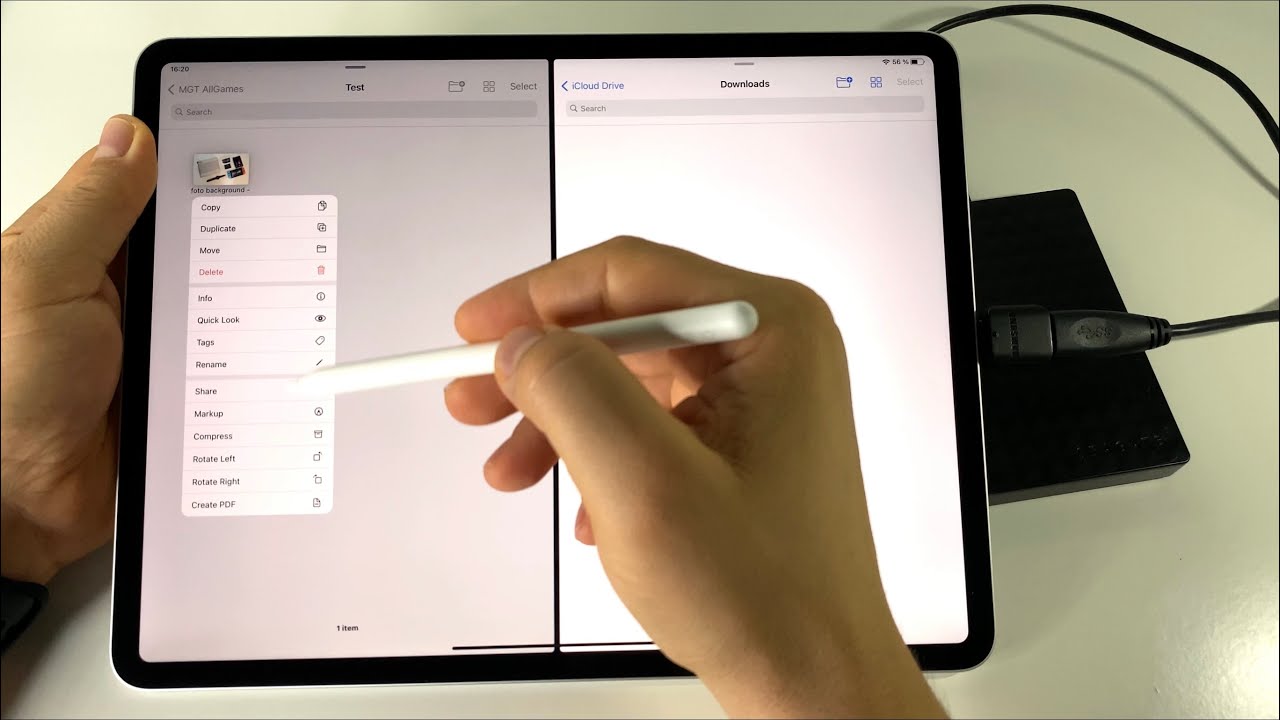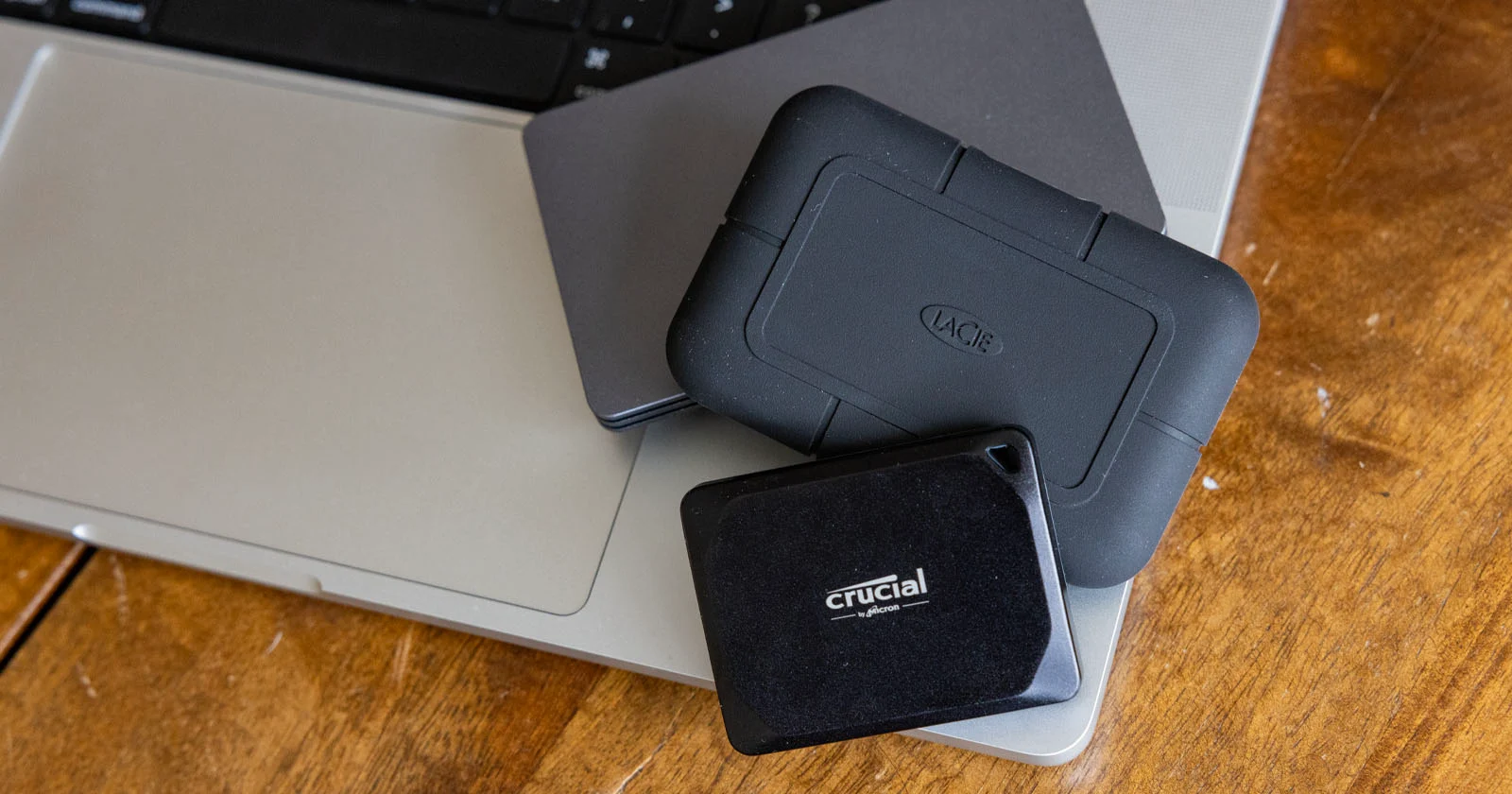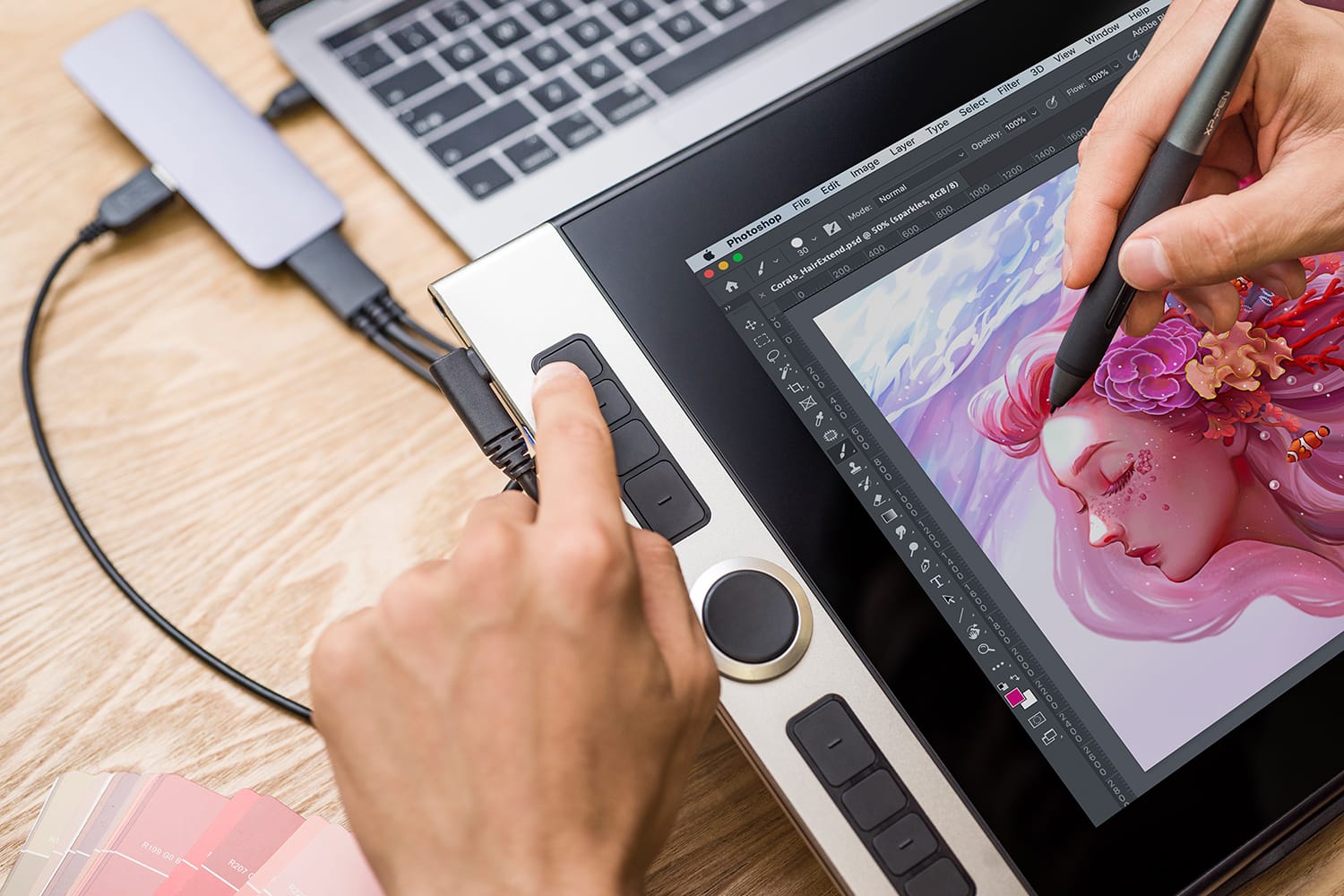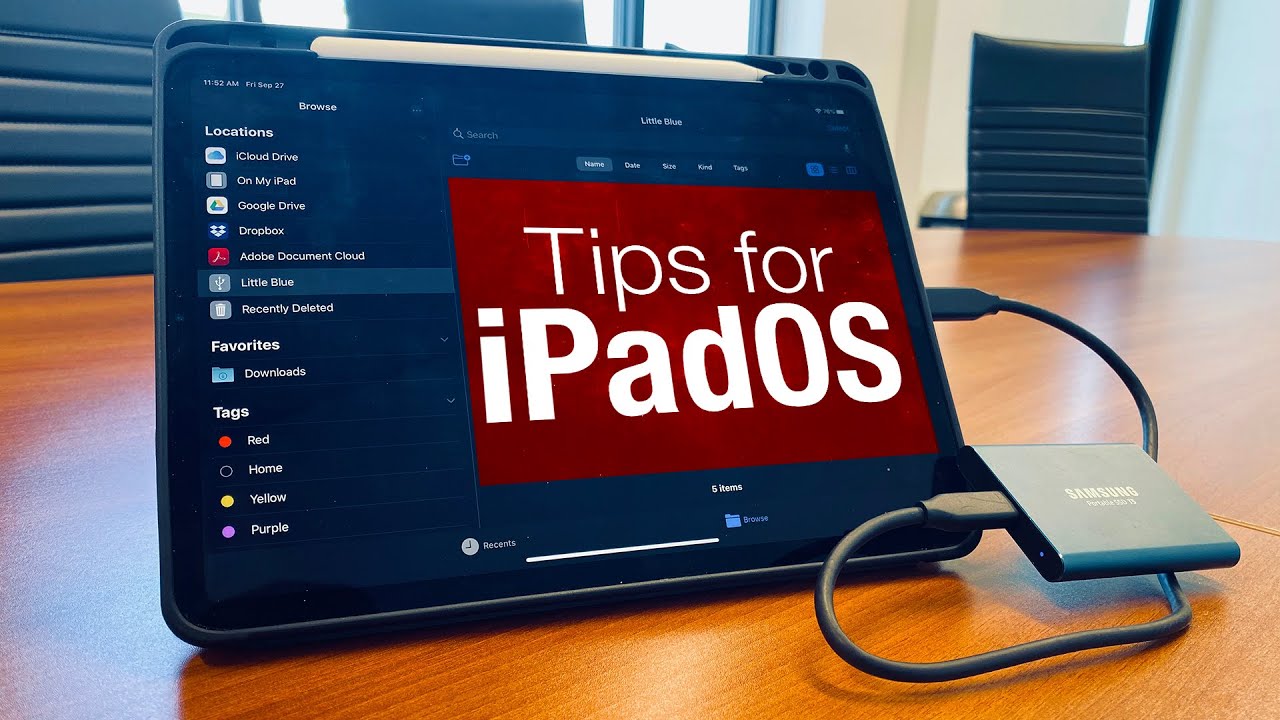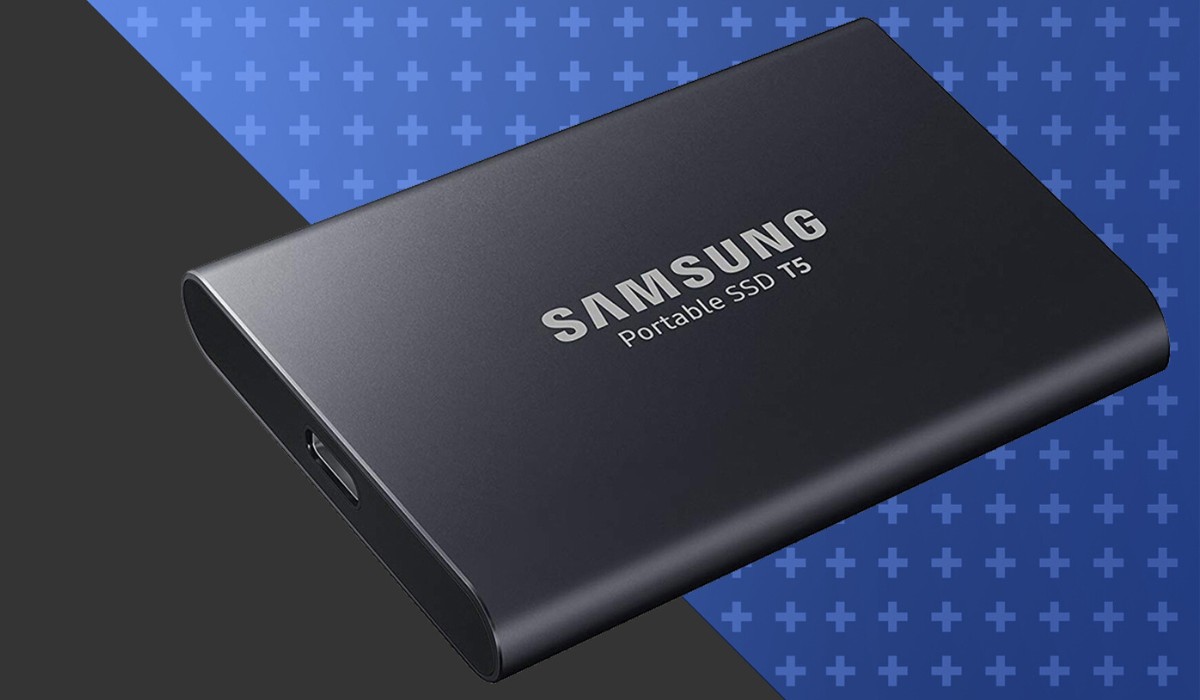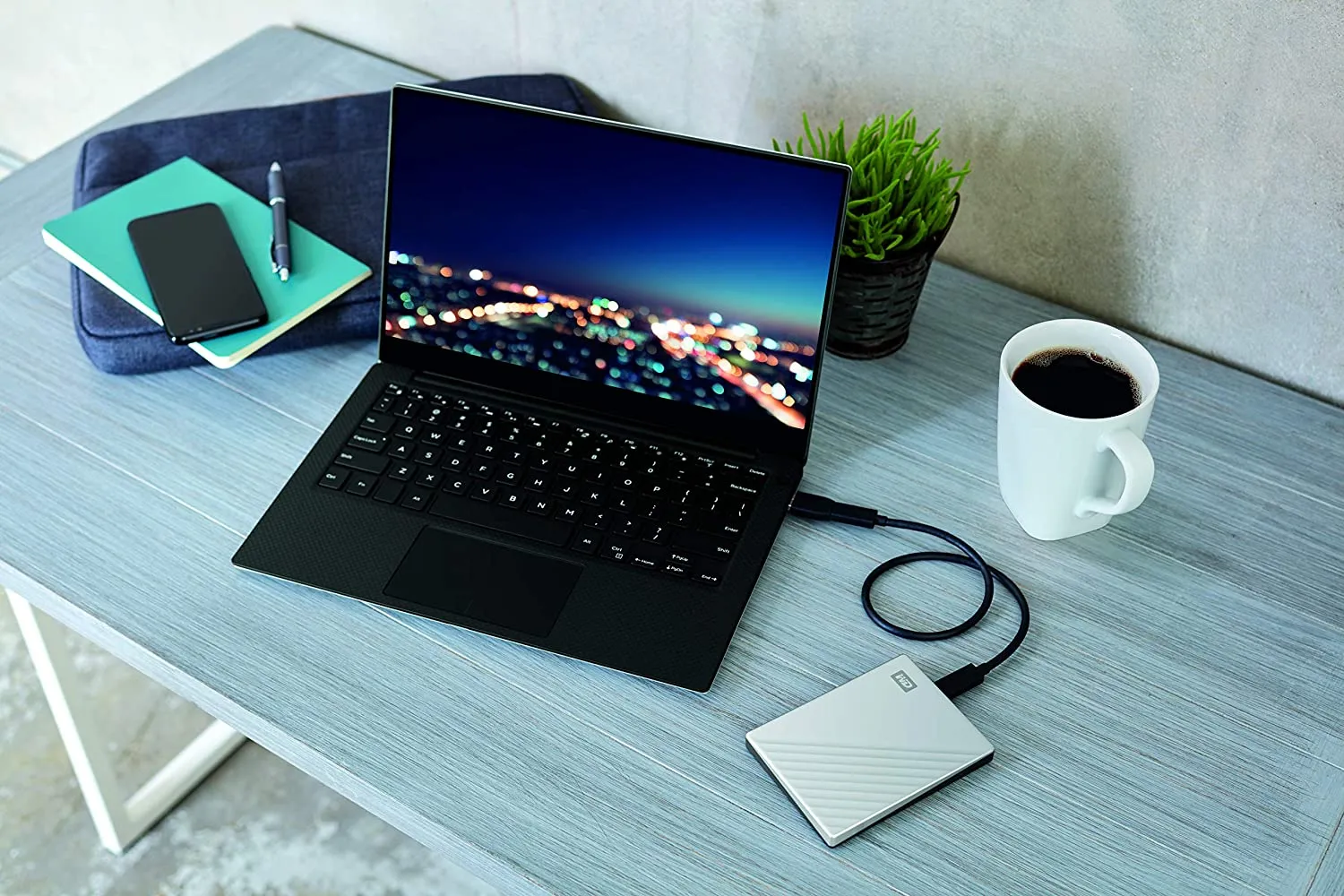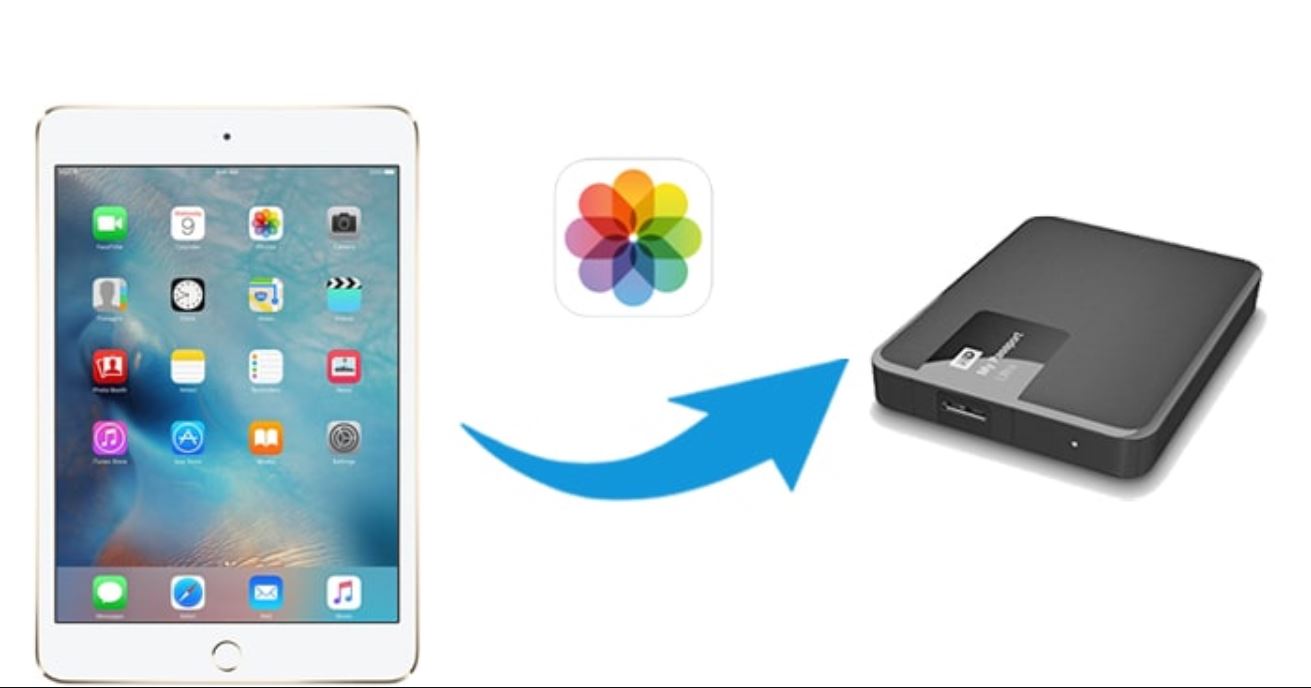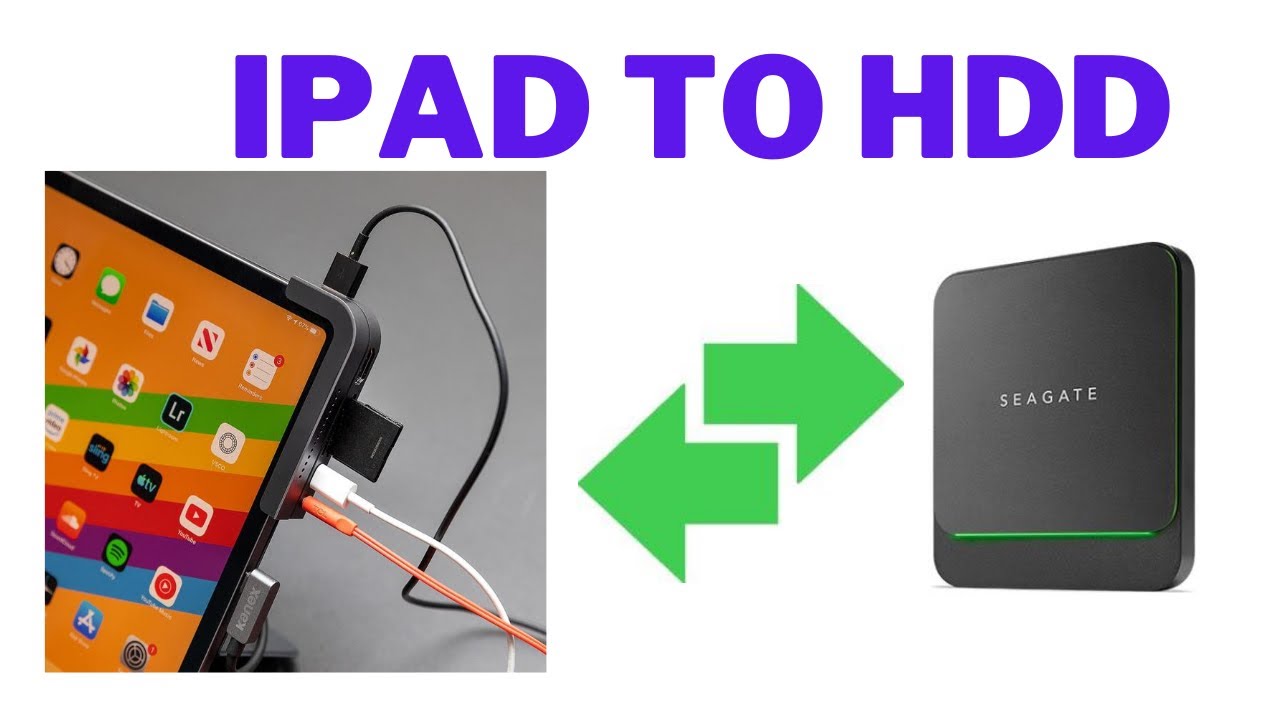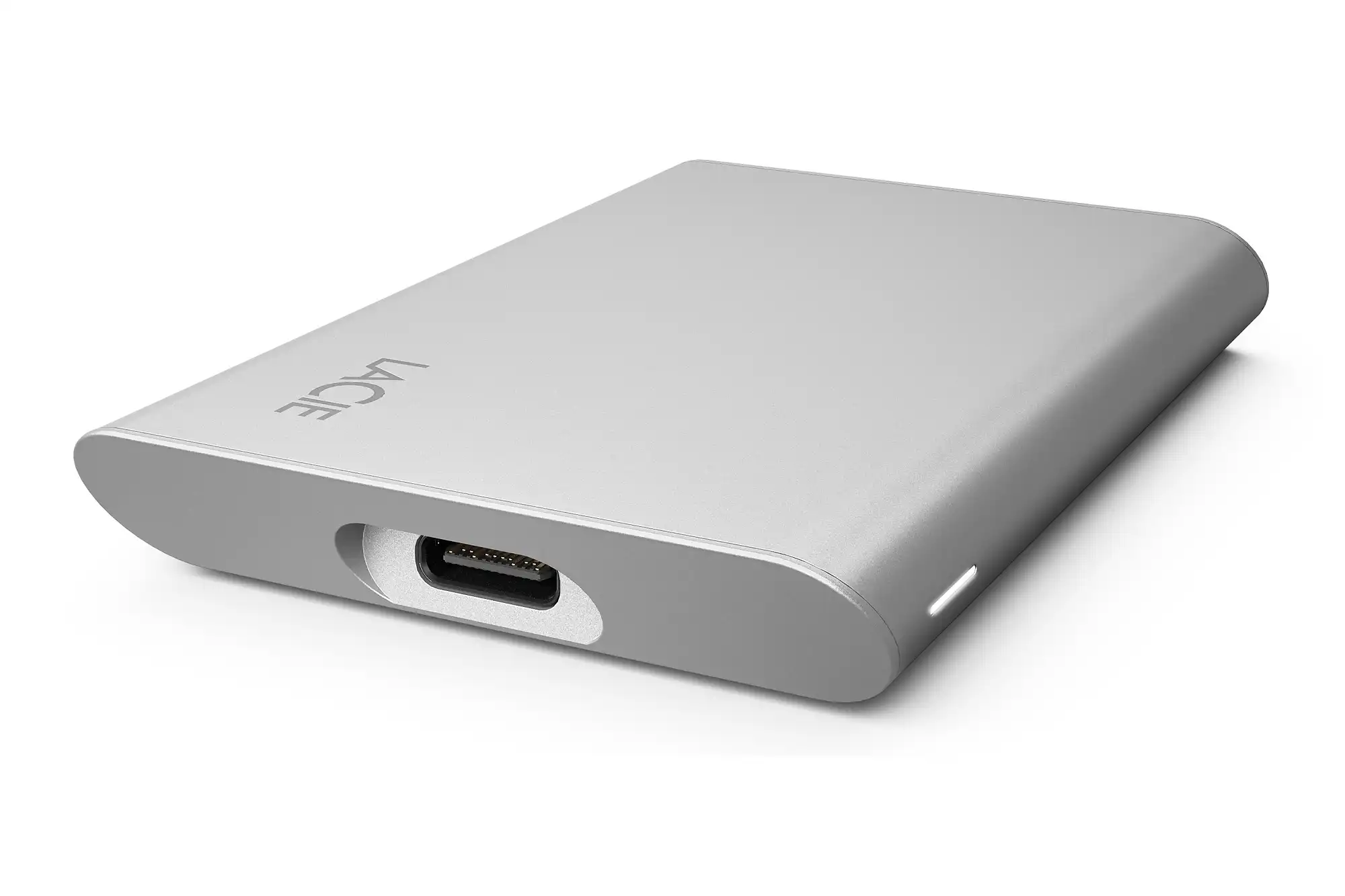Introduction
Welcome to the age of technology, where devices like the iPad Pro have revolutionized the way we work, create, and consume content. With its sleek design, powerful performance, and feature-rich capabilities, the iPad Pro is a versatile tool that can cater to the needs of professionals and creatives alike. However, one limitation of the iPad Pro is its limited storage capacity, especially for those who work with large files or media-intensive projects.
Thankfully, there is a solution to this conundrum – external hard drives. These portable storage devices provide a convenient way to expand the storage capabilities of your iPad Pro, allowing you to store and access your files on the go. In this article, we will explore how to find and connect an external hard drive to your iPad Pro, as well as how to effectively manage and transfer files between the device and the external storage.
Whether you are a photographer looking to offload your high-resolution images, a video editor needing additional space for your 4K footage, or simply someone who wants the flexibility to carry large files and documents with them, learning how to utilize an external hard drive with your iPad Pro can greatly enhance your productivity and efficiency.
Throughout this article, we will guide you through the necessary steps to ensure a seamless and hassle-free experience in using external hard drives with your iPad Pro. From checking compatibility to troubleshooting common issues, we have got you covered. So, let us dive in and unleash the true potential of your iPad Pro with the power of external storage!
Understanding iPad Pro’s Hardware Limitations
The iPad Pro is a remarkable device that boasts impressive performance and an impressive array of features. However, it is important to understand its limitations when it comes to storage. Unlike traditional laptops or desktop computers, the iPad Pro does not have a built-in hard drive with massive storage capacity.
Instead, the iPad Pro relies on internal flash storage, which provides fast and efficient performance but is often limited in terms of capacity. The available storage options for the iPad Pro vary depending on the model, ranging from 64GB to 1TB. While these storage capacities may be adequate for some users, those who work with large files, such as high-resolution images or 4K videos, may quickly find themselves running out of space.
Additionally, the iPad Pro does not have a standard USB port or an SD card slot like traditional computers. Instead, it features a USB-C port, which can be used for various purposes, including connecting external devices like external hard drives.
It is also important to note that the iPad Pro’s operating system, iOS, has certain restrictions when it comes to file management. Unlike desktop operating systems, iOS is designed to prioritize simplicity and security, which means that it imposes certain limitations on the types of files you can access and manipulate directly on the device.
However, while the iPad Pro may have these hardware and software limitations, external hard drives can bridge the gap and provide the much-needed additional storage and file management options. By connecting an external hard drive to your iPad Pro, you can overcome the storage constraints and gain greater flexibility in handling and accessing your files.
In the next sections, we will explore how to check the compatibility of external hard drives with your iPad Pro and guide you through the process of connecting and utilizing them effectively. So, don’t let the hardware limitations of the iPad Pro hold you back – let’s maximize its potential with the help of external storage!
Checking Compatibility of External Hard Drives
Before you start using an external hard drive with your iPad Pro, it is crucial to ensure compatibility between the two devices. Not all external hard drives are compatible with the iPad Pro, so it’s important to check a few key factors to avoid any compatibility issues.
The first thing you need to consider is the type of connection ports available on your iPad Pro model. The more recent iPad Pro models are equipped with a USB-C port, so make sure the external hard drive you choose also has a USB-C connection or comes with an adapter that can convert its port to USB-C.
Next, consider the storage capacity of the external hard drive. While the iPad Pro can support multiple terabytes of external storage, keep in mind that certain file formats and systems may affect compatibility. It is generally recommended to use external hard drives with capacities of 1TB or lower to ensure better compatibility and performance.
Another important factor to check is the file system format of the external hard drive. The iPad Pro supports the exFAT file system, which allows for seamless file transfer and compatibility across different platforms. Ensure that your external hard drive is formatted in exFAT or can be easily reformatted to this file system.
Additionally, consider the power requirements of the external hard drive. Some external hard drives may require additional power sources, such as a separate power adapter or connection to a power outlet. If your external hard drive has such power requirements, make sure you have the necessary accessories or access to a power source to ensure uninterrupted operation.
Lastly, it is advisable to check for any specific requirements or recommendations provided by the manufacturer of the external hard drive. They may provide additional information or software updates that can enhance compatibility with iPad Pro.
By checking these compatibility factors, you can ensure that the external hard drive you choose will work seamlessly with your iPad Pro. Doing so will not only save you from potential frustration and wasted time but also provide a smooth experience in expanding your storage and managing your files on the go.
Connecting an External Hard Drive to iPad Pro
Once you have ensured compatibility between your external hard drive and iPad Pro, it’s time to connect the two devices. The process of connecting an external hard drive to the iPad Pro is relatively straightforward, although it may vary slightly depending on the specific brand or model of your external hard drive.
To begin, make sure your iPad Pro is powered on and unlocked. Next, take the USB-C cable that came with your external hard drive or the appropriate adapter if necessary. Connect one end of the USB-C cable to the USB-C port on your iPad Pro, and the other end to the USB-C port on the external hard drive.
Upon connecting the external hard drive, your iPad Pro should recognize it automatically and display a confirmation message or notification. You may also hear a sound indicating that the device has been successfully connected. At this point, you can proceed to access the files stored on the external hard drive.
If your external hard drive requires additional power, such as a separate power adapter, make sure to connect it as well. Ensure that the power adapter is properly plugged into a power source and turned on. This will provide the necessary power supply to the external hard drive for it to function correctly.
It’s worth noting that the external hard drive may not appear immediately on your iPad Pro’s home screen or app list. Instead, you will need to open the Files app, which is the default file manager on iOS devices. If you don’t see the Files app on your home screen, you can swipe down on the home screen and use the search bar to locate and open it.
Once you have opened the Files app, you should see the external hard drive listed under the “Locations” section. Tap on the name of the external hard drive to access its contents. From here, you can view, manage, and transfer files to and from the external hard drive, just like you would with any other storage location on your iPad Pro.
Remember to properly disconnect the external hard drive from your iPad Pro when you are finished using it. To do this, go to the Files app, tap the “Edit” button in the top-right corner, select the external hard drive, and tap the “Disconnect” button. This will ensure that any ongoing file transfers are completed, and the device is safely disconnected.
By following these steps, you can easily connect an external hard drive to your iPad Pro and unlock its full potential in terms of storage and file management.
Using the Files App to Access External Hard Drives
With the external hard drive successfully connected to your iPad Pro, the next step is to utilize the Files app to access and manage the files stored on the external storage. The Files app is a powerful file management tool available on iOS devices, including the iPad Pro.
To access the Files app, locate its icon on your iPad Pro’s home screen and tap on it to open it. Once launched, you will find various sections and options within the Files app interface.
Under the “Locations” section on the left-hand side of the app interface, you should see the external hard drive listed. Tap on its name to view its contents.
Within the external hard drive’s folder, you will see all the files and folders stored on the device. You can navigate through the folder structure, open files directly in compatible apps, and perform various file management tasks.
For example, you can tap on a file to preview it, rename it, or move it to a different folder. You can also create new folders, delete files or folders, and perform other organizational actions to keep your files organized and easily accessible.
Additionally, you can use the Files app to copy files from the external hard drive to your iPad Pro’s internal storage or vice versa. Simply select the files you wish to transfer, tap the “More” button (represented by three dots), and choose the appropriate action, such as “Copy” or “Move”. You can then select the destination folder and complete the file transfer process.
The Files app also supports various file formats, allowing you to open and view files directly within the app. For example, you can open documents, view images, play audio and video files, and even use compatible third-party apps to edit or modify files directly on your iPad Pro.
It’s worth noting that some file formats may require specific apps to handle them properly. If you encounter a file that cannot be opened or viewed within the Files app, consider installing the necessary app from the App Store to ensure compatibility.
The Files app also integrates with cloud storage services like iCloud Drive and third-party cloud storage providers. This allows you to access files stored in the cloud, synchronize them across devices, and easily manage files across multiple platforms.
By utilizing the powerful features of the Files app, you can effectively manage and utilize the files stored on your external hard drive, providing you with a seamless and efficient workflow on your iPad Pro.
Transferring and Managing Files on External Hard Drives
Once you have accessed the files on your external hard drive using the Files app, you can transfer and manage them according to your needs. The Files app provides several options for organizing, copying, moving, and deleting files on the external storage.
To transfer files from your iPad Pro’s internal storage to the external hard drive, select the files you wish to move or copy. Tap the “More” button (represented by three dots) and choose the desired action, such as “Copy” or “Move”. Select the external hard drive as the destination, and the file transfer will commence.
Conversely, if you want to transfer files from the external hard drive to your iPad Pro, follow the same steps but select your iPad Pro’s internal storage as the destination.
When managing files on the external hard drive, you have options for renaming, creating folders, and deleting files or folders. Simply tap and hold the file or folder you wish to manage, and a context menu will appear with relevant options. Select the appropriate action and follow the prompts to perform the desired task.
If you want to backup or restore files from your external hard drive, the Files app provides a convenient way to do so. You can select files or folders and use the “Copy” or “Move” action to transfer them to another location, such as iCloud Drive or a cloud storage provider.
Additionally, you can leverage the search functionality within the Files app to quickly locate specific files or folders. Simply tap the search bar at the top of the app interface and type in the name or keywords related to the file you are searching for.
To optimize storage space on your iPad Pro, you can offload files from the external hard drive. This means removing files from your device’s internal storage while still keeping them accessible on the external storage. To do this, select the files you want to offload, tap the “More” button, and choose the “Offload” option. This will free up space on your iPad Pro without permanently deleting the files.
Remember to maintain a backup of your important files, whether it’s through regular file transfer to your computer or utilizing cloud storage services. This ensures that your files are not solely reliant on the external hard drive and reduces the risk of data loss.
By effectively transferring and managing files on your external hard drive using the capabilities of the Files app, you can maintain a well-organized and efficient workflow on your iPad Pro.
Handling File Formats and Compatibility Issues
When working with an external hard drive on your iPad Pro, it’s important to be aware of file formats and compatibility issues that may arise. While the iPad Pro supports a wide range of file formats, there are certain considerations to keep in mind.
Firstly, make sure that the file formats you’re working with are compatible with the apps installed on your iPad Pro. For example, if you have a video file in a format that is not natively supported by the default video player on iOS, you may need to install a third-party app specifically designed to handle that file format.
Secondly, pay attention to any restrictions or limitations imposed by the apps or software you’re using on your iPad Pro. Some apps may have specific requirements or limitations when it comes to opening or editing certain file formats. It’s important to be aware of these limitations to ensure a smooth and seamless experience.
Additionally, keep in mind that file formats can affect compatibility when transferring files between your iPad Pro and the external hard drive. If you encounter any issues while transferring or accessing files, it’s worth checking if the file format is supported by both devices. In some cases, you may need to convert the file to a compatible format before transferring it.
Moreover, have a clear understanding of the file system format of your external hard drive. As mentioned earlier, the iPad Pro supports the exFAT file system. If your external hard drive is formatted in a different file system, such as NTFS or FAT32, you may encounter compatibility issues. It’s recommended to format your external hard drive to exFAT for optimal compatibility with the iPad Pro.
In some cases, certain file formats may not be directly accessible or editable on the iPad Pro. For instance, specialized file formats used in professional video editing or graphic design software may require dedicated apps or software to open and work with them effectively. In such cases, it’s essential to have the appropriate apps or software installed on your iPad Pro to handle these file formats.
Finally, keep your apps and iOS system up to date to ensure the latest compatibility updates and enhancements. Developers regularly release updates that address compatibility issues, improve performance, and add support for new file formats. By keeping your device and apps updated, you can minimize compatibility issues and enjoy a smoother experience when working with files on your external hard drive.
By being aware of file formats and compatibility issues, you can adapt your workflow accordingly and make the most out of your external hard drive on your iPad Pro.
Troubleshooting Common Issues when using External Hard Drives
While using an external hard drive with your iPad Pro can greatly enhance your storage options and productivity, you may encounter some common issues along the way. Here are some troubleshooting tips to help you overcome these issues:
1. External hard drive not recognized: If your iPad Pro does not recognize the external hard drive, try disconnecting and reconnecting the USB-C cable. Ensure that the cable is securely connected to both the iPad Pro and the external hard drive. If the issue persists, try restarting your iPad Pro and check for any software updates.
2. Slow file transfer speed: If you experience slow file transfer speeds, there are a few things you can try. First, make sure that the external hard drive is not overloaded with files. If it is near its storage capacity, it may slow down the transfer process. Additionally, check if you have any background apps running that may be consuming resources. Closing unnecessary apps may help improve transfer speeds.
3. Incompatibility with file formats: If you encounter issues opening or using certain file formats on your iPad Pro, ensure that you have the appropriate apps installed to handle those file formats. Third-party apps from the App Store can often provide support for a wide range of file formats. Alternatively, consider converting the files to a compatible format before transferring them to the iPad Pro.
4. Power-related issues: Some external hard drives require additional power sources, such as separate power adapters or connection to a power outlet. If your external hard drive is not functioning properly, ensure that it is receiving adequate power. Try connecting it to a power outlet or use the power adapter provided with the device.
5. Device overheating: Intensive file transfers or prolonged use of the external hard drive can cause your iPad Pro to heat up. If you notice excessive heat, disconnect the external hard drive and allow your device to cool down. Avoid using your iPad Pro in direct sunlight or in environments with high temperatures, as this can exacerbate overheating issues.
6. Intermittent connection: If you experience a sporadic or intermittent connection between your iPad Pro and the external hard drive, ensure that the USB-C cable is not loose or damaged. Consider trying a different USB-C cable or using a USB-C hub with additional ports for a more stable connection.
If you continue to experience issues with your external hard drive, it may be helpful to consult the manufacturer’s instructions or reach out to their customer support for further assistance. They can provide specific troubleshooting steps or offer insights into any known issues related to your particular external hard drive model.
By following these troubleshooting tips, you can overcome common issues and ensure a smooth experience when using an external hard drive with your iPad Pro.
Conclusion
Expanding the storage capabilities of your iPad Pro with an external hard drive can significantly enhance your productivity, allowing you to carry large files, access content on the go, and manage your data efficiently. Throughout this article, we have explored various aspects of using an external hard drive with your iPad Pro, from checking compatibility to troubleshooting common issues.
Understanding the hardware limitations of the iPad Pro, checking compatibility, and connecting the external hard drive are crucial steps to ensure a seamless experience. The Files app serves as a powerful tool for accessing and managing files on the external storage, allowing you to transfer, organize, and manipulate files with ease.
However, it is important to consider file formats and compatibility issues when working with external hard drives. Properly converting and installing compatible apps can help overcome any file format obstacles, ensuring smooth file management on your iPad Pro.
Should you encounter any issues along the way, the troubleshooting tips provided can help address common problems such as unrecognized drives, slow transfer speeds, or intermittent connections. Remember to follow best practices, keeping your device and apps up to date, maintaining backups, and being aware of power-related concerns.
With the right external hard drive and a solid understanding of its integration with your iPad Pro, you can unlock the full potential of your device, allowing for seamless file management, increased storage capacity, and improved productivity.
So, don’t let storage limitations hold you back. Embrace the power of an external hard drive and revolutionize the way you work, create, and access your files on your iPad Pro.







